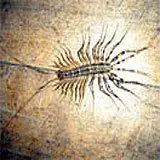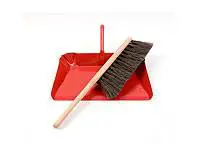
I like millipedes, and I know it doesn’t make much sense considering my intense dislike of their cousin, the house centipede.
I can remember catching millipedes when I was knee high to a grasshopper, just to play with them. I would find a millipede, pick it up, watch it roll immediately up into a little protected ball, and let it sit in my palm until it felt safe enough to unroll itself and walk around on my hand. It was actually kinda therapeutic. All those little legs felt neat, and they moved so slowly. It was just sorta relaxing.
Alright, now that you are probably questioning my sanity , I’ll move on. Millipedes (all 6,000+ species) are in the class Diplopoda and are not insects at all. They are arthropods and more closely related to crustaceans and spiders than they are to bugs. A millipede, if the conditions are right, can live from five to seven years or longer. They are detrivores, which means they eat dead and decaying plant matter. These little beauties produce new legs almost every time they shed their exoskeletons and can have more than 400 total.
Millipedes have a tendency to wander indoors in the late fall when temps start to drop in search of somewhere to overwinter. They also get restless in times of excessive rain. The overabundance of moisture can drive them out of their own homes and into yours. In some species, it can take up to five years to reach sexual maturity. Seems like a good thing, however, as once they do hit that mile marker, they can lay up to 300 eggs at a time. This is why they are so abundant and become such a problem for people, especially if you have them nesting indoors. As much as I like millipedes, I understand and respect other people’s fear/disgust, and desire to get rid of millipedes.
Millipedes and Centipedes
Millipedes are very commonly mistaken for house centipedes. In this section, you will find a picture and identification for each.

Millipedes
- About 1 ½ inches long
- Colored black, brown, orangish, or reddish
- Curl up when disturbed
- Segmented bodies
- At least 2 pairs of legs on each segment
- Hard, almost with an armored shell

House Centipedes
- Up to 1 ½ inches long
- Colored brownish or grayish yellow with dark bands
- 15 pairs of very long, thin banded legs
- Quite flexible and squishy
- Can actually bite, injecting venom. Nothing major, but it is possible to feel a centipede bite.
- Immensely disgusting
What centipedes and millipedes have in common, though, is that they both are harmless from a standpoint of spreading diseases or doing major damage. That doesn’t change the fact that they are ugly, unwelcomed visitors when they arrive inside your home. For reference, we did an entire piece on how to get rid of centipedes that you can review as well.
Best Millipede Control Methods
Exclusion of household millipedes.
If house millipedes can’t get in to a building, then they can’t be a problem, right? Right. Easier said than done. But still highly doable.
Walk around the outside of your house with some sealant and a caulking gun, and get to work. Seal up any cracks in the foundation and around any cables, wires, and plumbing that enter the house. Take your time with this, as they can get through the tiniest openings imaginable. It’s also a good idea to install door sweeps.
Find the mentioned products on Amazon:

Inside moisture control.
Managing interior moisture is a very important step in getting rid of millipedes. Millipedes require high humidity to live, and will gravitate to areas that supply enough humidity for them to be comfortable. The more you can dry out your home, the better. Install a dehumidifier (our favorite is from homelabs, and can be found here on Amazon) and set up some fans in rooms that don’t get a lot of air flow. Make sure you don’t have any leaky plumbing in the walls, ceilings, or under sinks. If the faucets are dripping, fix’em. Move furniture around to find their nice, damp little hidey-holes. Also, they prefer cooler temps, so crank the heat while trying to drive them out.

Outside moisture control.
Exterior moisture is definitely harder to control, as you can’t stop the rain or change a climate, but there are some things you can do.
Start with the gutters. Make sure they are collecting and diverting water correctly. If rain water is dripping down from anywhere it’s not supposed to, do what you gotta do to make that stop. It might be some sealant or it might be that the gutters are detaching. Just have a look. Also, make sure that the gutters coming down from the roof divert the water as far away from the house as possible. This might mean buying extensions. Finally, if you must water your lawn, do so in the morning so that it’s dry by afternoon. Millipedes are nocturnal.

Create an inhospitable environment around your house.
As I mentioned earlier, millipedes are detrivores, which are the last rung on the food chain. If you get rid of what they want to eat, it will be easier to get rid of millipede populations, or at least decrease them. Try to avoid using too much mulch in your gardens, or allowing it to rot. At the very least, reduce the amount of it. Mulch does a fine job of holding onto moisture and creates a perfect environment for millipedes.
Move woodpiles and compost piles as far from the home as possible. Clear away any and all dead and and decaying plant matter including leaves, brush, and random sticks and logs.

How to get rid of millipedes . . . by hand.
Some of you may have to put on your big kid pants for this one. But seriously, if you’re certain that you’re dealing with a millipede, there’s nothing to worry about. They move slowly and can’t hurt you.
I prefer the paper method. Grab any sheet of paper you can find, set it in front of the millipede, let it walk onto it, take the millipede outside, and dump it. A broom and a dustpan work pretty well, too. If these options sound a little too “hands on,” grab a vacuum or a shop-vac and suck the little bugger up. Just remember to remove the bag or dump the bin after you’re through.
Kill Millipedes with Pesticides
You don’t have a whole lot to fear from millipedes. For most people they are more of an annoyance than anything, especially if you have a ton of them around. The millipedes that are found in the U.S. are generally harmless to people and pets. That being said, there are people and animals out there who do suffer bad reactions when they come in contact with them. But for the most part, they’re just deemed disgusting. The biggest issue most people have to worry about is that when millipedes die, they have a tendency to ooze some rather stinky fluids. Also, you have to be careful squishing them, as their inner juices can and do stain.
Many good pesticides can be readily found online, through pest control companies, or at local gardening stores. The most widely available forms of millipede pesticides are aerosol sprays, powders or dusts, residual granules, and liquid sprays. If you like the aerosol idea, I would recommend Ortho home defense, a tried-and-true product from a good manufacturer (find it here on Amazon). Other options include CB Borid Turbo (active ingredient boric acid), or CB Intruder HPX (active ingredients cyfluthrin and pyrethrins). If you prefer powders or dusts, I would suggest: Drione Dust (active ingredients pyrethrins, piperonyl butoxide, and amorphous silica gel), Delta Dust (active ingredient deltamethrin), or MotherEarth D (active ingredient diatomaceous earth). For granules, look for: Demand G (active ingredient lambda-cyhalothrin), or EcoExempt G (active ingredient plant oil [hexa-hydroxyl]). And finally, for liquid sprays, look into: Cyper WP (active ingredient cypermethrin), Talstar P (active ingredient bifenthrin), or Suspend SC (active ingredient deltamethrin).
Best Natural Millipede Control Methods
Diatomaceous earth.
This natural wonder works very well for killing centipedes. Diatomaceous earth is made up of thousands of little fossilized diatoms that just happen to be extremely sharp. When a millipede wanders through the stuff, it is inflicted with numerous little cuts that cause it to dehydrate and die. You can get a 10 lb bag from Amazon for a decent price.
Boric acid.
This weak acid is derived from the mineral borate. It is in powder form and can be used for filling cracks and crevices where millipedes might wander. Boric acid sticks to their legs and bodies and acts as a dessicant (like diatomaceous earth) and as a stomach poison.
Chickens.
These birds are great biological control for millipedes as well as a wide variety of other pests. Chickens are voracious eaters and spend most of their day wandering around looking for little moving critters that they can eat. To top it all off, they’re pretty darn cute.
Wood ash.
This is a very simple millipede deterrent. Mix wood ash into soil to help dry it out. Concentrate on the soil that is right next to the foundation of your home. This works because millipedes like to live and lay eggs in moist soil. For added effectiveness, use a rake or hoe to roughen the soil so that it dries faster.